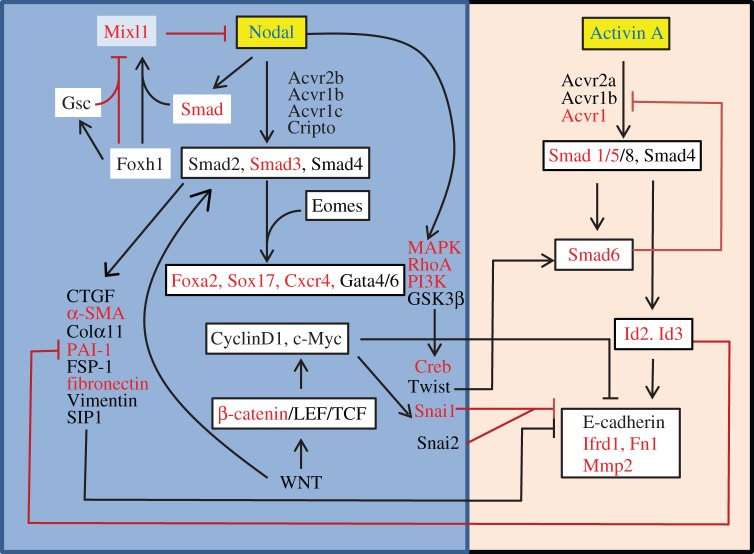Figure 4.
A model of the molecular cascade downstream of Nodal and Activin A signalling in EpiSCs. Nodal activates Mixl1 activity via Smad and Foxh1 transactivation to induce mesendoderm progenitors in the PS. Mixl1 in turns represses Nodal expression. Foxh1 and Gsc cooperatively repress Mixl1 expression. Nodal signals via the TGF-β–Smad2/3/4 pathway and activates MAPK/RhoA/PI3K signalling. The downstream activity of these pathways dismantles the epithelial phenotype of the epiblast cells, and promotes the acquisition of a transitory mesenchymal cell state during gastrulation. Smad factors, along with Eomes, promote expression of endoderm genes (Sox17, Foxa2, Cxcr4, Gata). It is postulated that the acquisition of a mesenchymal phenotype is a pre-requisite step of the allocation of cells to the endoderm lineage in the embryo, which can be enhanced by Wnt/β-catenin signalling activity. Activin A, in contrast to Nodal, upregulates some components of the Smad-mediated cascade that promote via Id proteins the maintenance of an epithelial cell state. The omission of the mesenchymal state during Activin A induced differentiation may hamper the generation of competent endoderm cells that can differentiate into more advanced cell types. Genes identified as differentially expressed by microfluidic qPCR are shown in red. (Online version in colour.)

